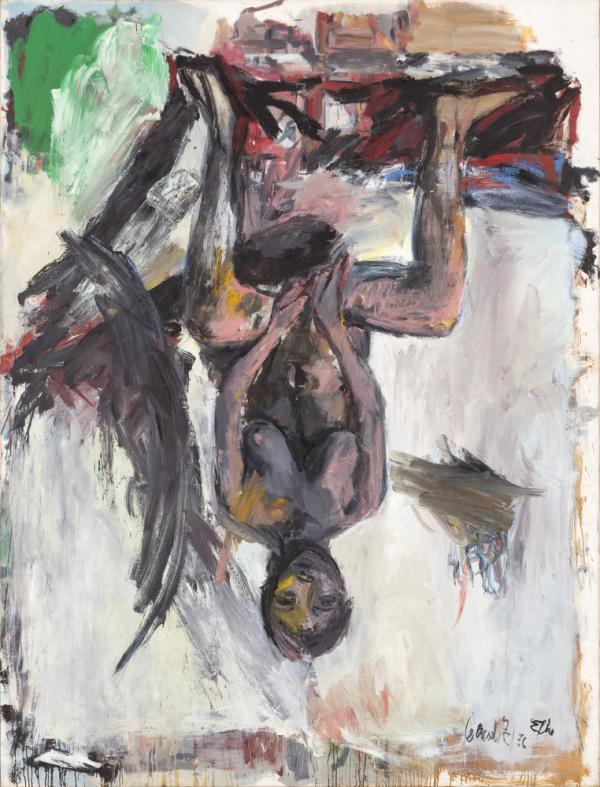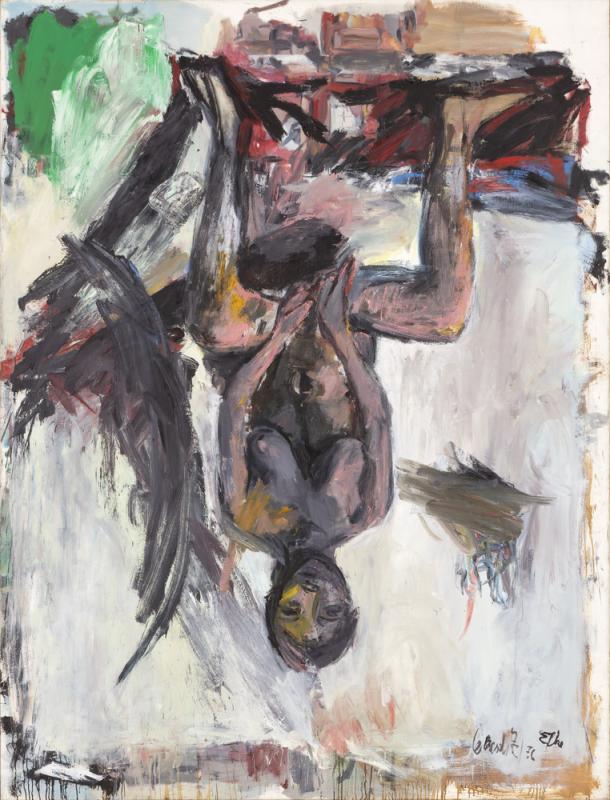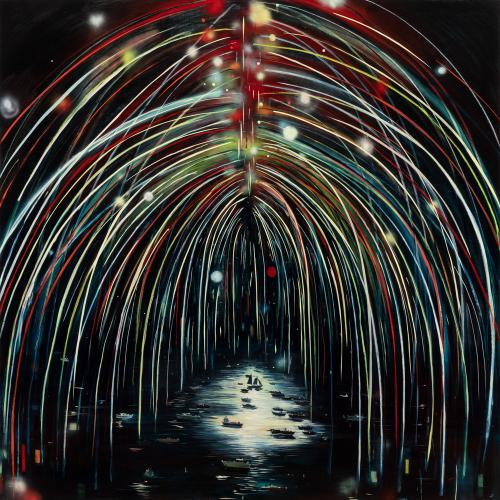Skip to main content
Elke
Artist
Georg Baselitz
(Born 1938, Germany)
Date1976
MediumOil on canvas
DimensionsUnframed: 98 1/2 x 75 in. (250.19 x 190.5 cm)
Framed: 99 5/8 x 76 1/8 x 2 1/2 in. (253.05 x 193.36 x 6.35 cm)
Framed: 99 5/8 x 76 1/8 x 2 1/2 in. (253.05 x 193.36 x 6.35 cm)
Credit LineCollection of the Modern Art Museum of Fort Worth, Museum purchase, The Friends of Art Endowment Fund
Object number1994.2
Status
Not on viewSignedin script, verso, l.r.c., "G. Baselitz 76 Elke"; in script, recto u.r.c., "Elke/Baselitz 1976"
Copyright© Georg Baselitz
Category
Label TextSince Georg Baselitz began painting in the 1950s, he has become best known for painting his figures upside down. In his portraiture, Baselitz challenges himself to suppress specific emotions and focus on pure visual structure. The model is essentially an excuse to paint, to engage in the struggle of representation, to record his process of constructing a painting through his subject. He paints his sitters upside down so that they cannot dominate that process. It is important to know that Baselitz did not paint these pictures right-side up and then, as a purely conceptual act, turn them upside down. He painted the image upside down. This distanced him from the image of Elke and from the conventions of portraiture, so that what is left is an invention rather than a transcription. The integrity of his method is proven when one turns his pictures “right-side up.” They simply do not work.
The largest single group of Baselitz’s portraits are those of his wife, Elke Kretzschmar Baselitz, whom he began painting in 1969. In Elke, 1976, the subject is seated not on a chair but on a huge brushstroke. A typical setting has been replaced by an abstract field of marks, and Elke’s body is intertwined with large arcing gestures, tonal zones of stormy grays and blues, and an occasional burst of pink and green. Baselitz’s portraits from the mid-1970s forward grew larger in size, and Elke’s body became increasingly at the mercy of the artist’s intuitive distortions. A plasticity sweeps everything together so that blunt cursive gestures, filigree strokes, drips, splatters, broken scumbles, and opaque overpainting run into one dancing optical medley. The figure turns into ground, imagery becomes abstraction, and vice versa. The model and the painting have become one.
The largest single group of Baselitz’s portraits are those of his wife, Elke Kretzschmar Baselitz, whom he began painting in 1969. In Elke, 1976, the subject is seated not on a chair but on a huge brushstroke. A typical setting has been replaced by an abstract field of marks, and Elke’s body is intertwined with large arcing gestures, tonal zones of stormy grays and blues, and an occasional burst of pink and green. Baselitz’s portraits from the mid-1970s forward grew larger in size, and Elke’s body became increasingly at the mercy of the artist’s intuitive distortions. A plasticity sweeps everything together so that blunt cursive gestures, filigree strokes, drips, splatters, broken scumbles, and opaque overpainting run into one dancing optical medley. The figure turns into ground, imagery becomes abstraction, and vice versa. The model and the painting have become one.






